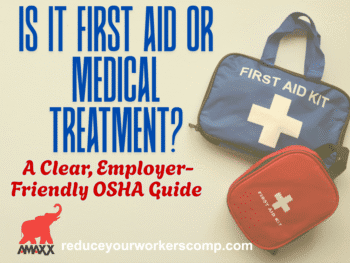Experiencing low back pain is common among adults. And as one of the most pervasive and expensive causes of workers’ compensation claims, it makes sense do everything possible to prevent LBP.
Our industry could prevent needless disabilities and save employers and payer’s a significant amount of money if armed with the latest research and some simple exercises.
About LBP
The biggest risk factor for a second episode of LBP is having a first episode. New research out of Australia shows that more than any other risk factor – whether it is obesity, smoking, or some other comorbidity – a single occurrence of LBP is the main commonality among those who have a second occurrence.
Specifically, one-third of people who have LBP will have a second episode within a year, and the chance of another recurrence triples after that. The researchers were surprised, given that preventing a recurrence of LBP is fairly easy.
Studies indicate that doing exercise can reduce the risk of a LBP episode by 35 percent, and combined with education about LBP, the risk drops by 45 percent.
That said, treatment for acute back pain is different from chronic LBP.
Acute LBP. This is short-term, generally lasting no more than six weeks.
- The best treatment is to stay active, but avoid overdoing it. Keeping up with activities such as work is advised, and no bedrest!
- Almost all episodes of acute back pain will resolve spontaneously, even when there is evidence of disc herniation and sciatica. So conservative measures are called for and appropriate.
- An MRI prior to 6 weeks of persistent pain is not recommended unless various red flags are present suggesting a serious or progressive condition. Premature MRIs have a high likelihood of showing incidental chronic changes which are common in adults and are not related to the patient’s complaints.
- Psychosocial factors play a major role in LBP and should be addressed, g., stress, job dissatisfaction and sleep disturbances.
Chronic LBP. LBP is label as chronic when it persists for at least three months and is a major cost driver in workers’ compensation.
- One in four injured workers with chronic LBP is out of work for up to six months, increasing the chances of permanent disability.
- The estimated direct costs exceed $14 billion annually.
Treatment
While most episodes of LBP resolve themselves within a few weeks, there is no quick fix for chronic cases. The best advice is to do exercises that target specific areas, although no one exercise is ‘best.’ The best exercise is the one the injured worker does consistently.
Ideally, the injured worker should do movements that increase mobility and range of motion, since that will reduce their pain. Tight, weak muscles don’t allow the joints to move properly.
Pilates and Yoga are great ways to reduce pain and prevent LBP. Here are additional exercises that can help LBP
- Strengthening. Exercises that help strengthen muscles in the front and back of the spine are best. They should focus on the deeper, transverse abdominis that support the spine. Planks are a good example. They also help the intrinsic, tiny muscles that attach to each vertebra and provide postural support, which is important.
- Practicing good posture is key to improving stability. The goal is to have a neutral spine. Workers who sit all day put increased pressure on the spine.
- Body mechanics. Proper lifting techniques, for example, help protect the spine and prevent recurrences of LBP.
- Flexibility. Exercises that target the lower extremities are important. The hip rotators, hamstrings, and hip flexors can tighten up and cause pain. Movements that increase flexibility can relieve chronic LBP.
- Stretching. Taking the stress off the lower back can greatly relieve LBP. Gentle stretches can provide the fastest relief for LBP. The ‘cat/cow stretch’ is especially effective and easy to do. The worker is on the floor on his hands and knees, with hands under the shoulders and knees under the hips. He rounds the back, stretching the mid-back between the shoulder blades, similar to how a cat stretches. After 5 seconds, he relaxes and then arches his lower back and holds for another 5 seconds. Another is the ‘knee to chest stretch.’ In this one, the worker lies on his back with knees bent and feet flat on the floor, with his hands behind the knees or just below the kneecaps. He then gently brings both knees toward the chest, using the hands to pull them; and holds for 20 to 30 seconds.
Conclusion
Any worker of any age can experience LBP. Older workers typically have degenerative changes, while younger employees tend to experience soft tissue problems. Treatment will vary depending on the specific pain generator and be customized according to specific evidence-based medicine guidelines. The key is to make a correct diagnosis, and then target the best therapy beginning with conservative measures.

Contact: mstack@reduceyourworkerscomp.com.
Workers’ Comp Roundup Blog: https://blog.reduceyourworkerscomp.com/
©2018 Amaxx LLC. All rights reserved under International Copyright Law.
Do not use this information without independent verification. All state laws vary. You should consult with your insurance broker, attorney, or qualified professional.













